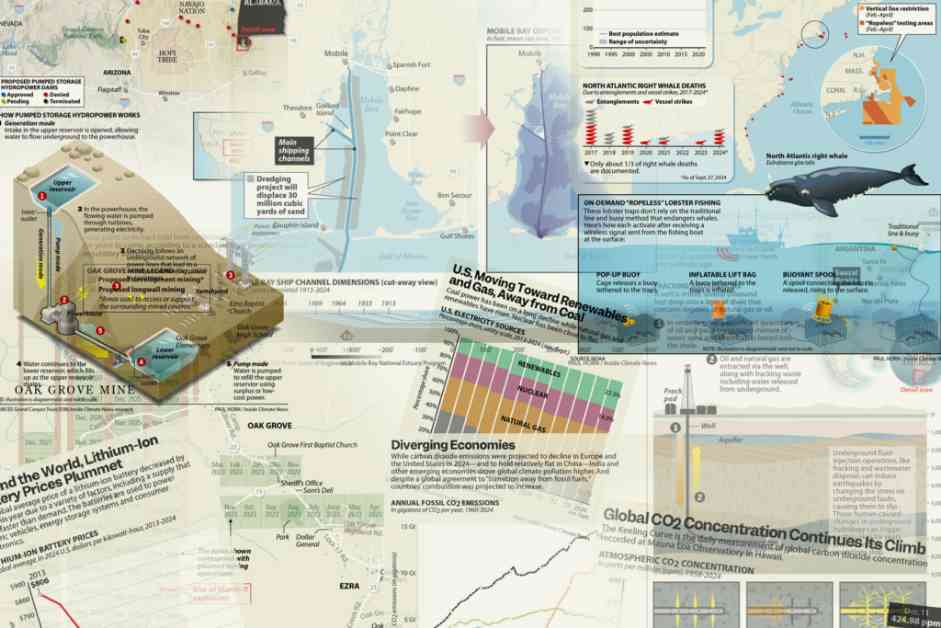Visualizing Climate Change in 2024: Graphics and Insights – Inside Climate News
The year 2024 has been a pivotal one in the fight against climate change, and the use of graphics has played a crucial role in making the impact of this global issue more tangible. From charts to locator maps to infographics, these visual representations have helped shed light on the complexities of climate change and its far-reaching consequences.
Uncovering the Human Impact
One of the most striking visuals is the Keeling Curve, a powerful symbol of the human impact on the environment and the role of fossil fuels in global climate change. This data, discovered by scientist Charles David Keeling in the 1950s, shows a steady increase in carbon dioxide levels, primarily due to the burning of fossil fuels. Despite decades of warnings, countries continue to subsidize these fuels, contributing to the rise in emissions.
While the United States and European countries have made strides in reducing CO2 emissions, many developing nations have seen an increase in emissions, especially in industries like international shipping and aviation. The need for a clean-energy transition is urgent, with developing countries calling for support from wealthier nations to address the crisis they have played a significant role in creating.
Hope on the Horizon
Amidst the alarming data, there are glimmers of hope in the fight against climate change. The decarbonization of electricity and the decreasing costs of renewable energy sources offer promising solutions. The transition to cleaner energy is not only necessary but also beneficial for both lives and financial stability.
One of the most poignant examples of climate change in action is the melting of the Arctic, a stark reminder of the consequences of global warming. While challenges remain, the progress made in reducing emissions and embracing renewable energy sources is cause for optimism.
A Personal Touch: Behind the Graphics
Graphics Editor Paul Horn, with his decades of experience and award-winning expertise, has been instrumental in bringing these stories to life through infographics, locator maps, and illustrations. His dedication to supporting reporters in telling the story of climate change visually has been vital in raising awareness and inspiring action.
As readers, we have the power to support organizations like Inside Climate News that provide critical reporting on environmental issues. By making a tax-deductible donation, we can help fund the vital work of journalists and graphic designers like Paul Horn, ensuring that the story of climate change continues to be told with depth, accuracy, and impact. Together, we can make a difference in the fight against climate change.














